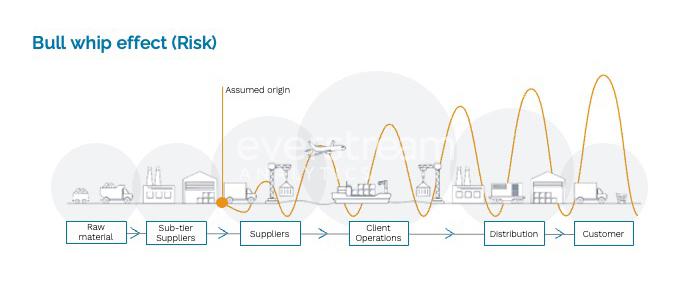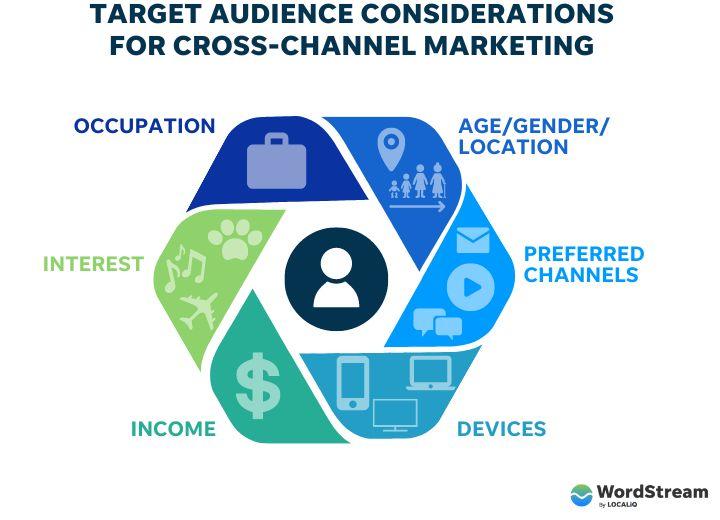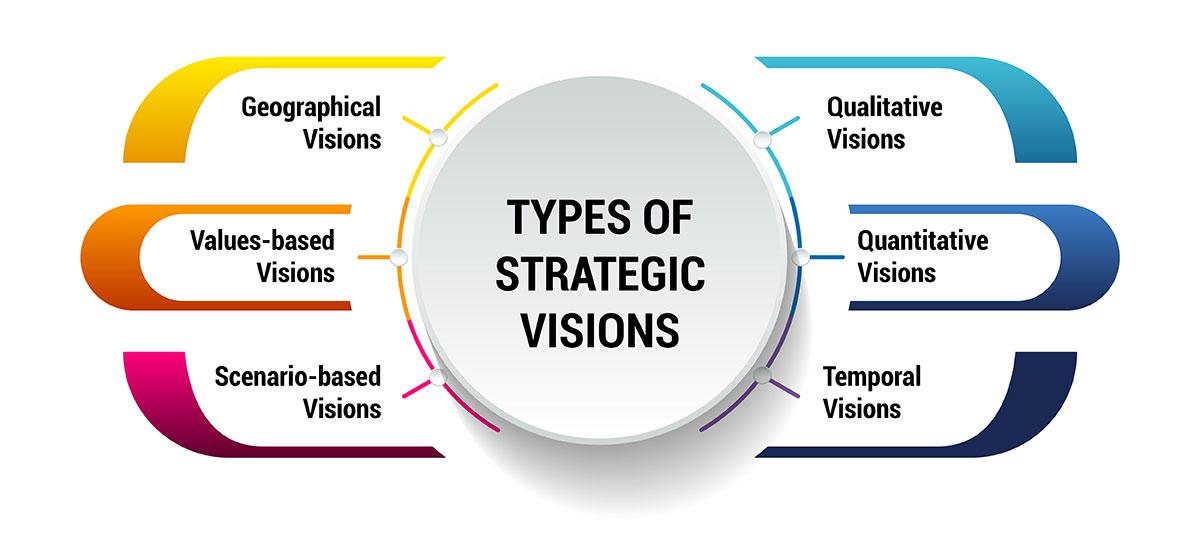In the dynamic world of e-commerce, strategic thinking is your compass. It transforms ideas into actionable plans, driving revenue through targeted marketing, customer insights, and innovation. Embrace strategy to unlock limitless growth and inspire success!
How Strategic Thinking Fuels Ecom Revenue
In the ever-evolving landscape of e-commerce, where competition is fierce and consumer expectations are at an all-time high, the difference between success and stagnation often boils down to one crucial element: strategic thinking. While many businesses focus solely on tactical operations—ramping up advertising budgets, optimizing supply chains, or enhancing user experience—those that embrace a strategic mindset unlock doors to unprecedented revenue growth and sustainability. This article delves into the transformative power of strategic thinking, illustrating how it not only shapes innovative solutions but also ignites a culture of foresight and adaptability. Discover how visionary leaders leverage strategic insights to navigate complexities, seize opportunities, and ultimately fuel their e-commerce revenues to dazzling heights. Join us on this journey to explore the vital connection between strategic thinking and thriving e-commerce, and learn how to elevate your business from merely surviving to truly thriving in the digital marketplace.
Understanding the Power of Strategic Thinking in E-commerce
In the rapidly evolving world of e-commerce, where competition is fierce and consumer expectations are constantly changing, the ability to think strategically can be the difference between merely surviving and thriving. Strategic thinking empowers e-commerce businesses to align their operations with market demands, anticipate trends, and make informed decisions that lead to sustainable revenue growth.
At its core, strategic thinking involves a deep understanding of both internal capabilities and external market dynamics. This dual focus allows e-commerce leaders to:
- Identify Opportunities: Recognizing gaps in the market and areas for innovation can lead to the development of unique product offerings that resonate with consumers.
- Anticipate Challenges: By analyzing market trends and consumer behavior, businesses can prepare for potential obstacles, ensuring they remain agile and responsive.
- Optimize Operations: A strategy rooted in data allows for streamlined processes, from inventory management to customer service, enhancing overall efficiency.
Moreover, a strategic approach fosters a culture of collaboration and creativity within teams. When employees are encouraged to think strategically, they become more engaged and empowered to contribute ideas that can drive the business forward. This collaborative environment not only enhances employee satisfaction but also cultivates innovation—essential for staying competitive in the e-commerce landscape.
To illustrate the impact of strategic thinking on e-commerce revenue, consider the following table showcasing successful companies and their strategic initiatives:
| Company | Strategic Initiative | Outcome |
|---|---|---|
| Amazon | Personalized recommendations | Increased sales conversion rates |
| Warby Parker | Home try-on program | Boosted customer engagement |
| Zalando | Data-driven inventory management | Reduced costs & improved fulfillment |
These examples highlight how strategic initiatives not only enhance customer experience but also significantly contribute to revenue streams. By investing in strategic thinking, e-commerce businesses can create a roadmap for success that goes beyond short-term gains, ensuring long-term sustainability and growth.
Ultimately, the power of strategic thinking lies in its ability to transform challenges into opportunities, guiding e-commerce businesses to navigate the complexities of the digital marketplace with confidence and foresight. As companies embrace this mindset, they are not just building revenue; they are crafting a resilient future aligned with market needs and consumer desires.
Unlocking Revenue Potential Through Strategic Mindset
In the ever-evolving world of e-commerce, a strategic mindset is not just an asset; it’s a necessity. Businesses that adopt a proactive approach to their strategy are often the ones that unlock hidden revenue potential. By understanding market trends, customer behavior, and innovative technologies, brands can position themselves not just to compete, but to lead.
Identifying Opportunities: The foundation of strategic thinking lies in identifying opportunities that others might overlook. This involves:
- Market Analysis: Regularly assessing the competitive landscape to discover gaps.
- Customer Insights: Leveraging data analytics to understand customer preferences and buying patterns.
- Technology Trends: Staying ahead of innovations that can enhance customer experience or streamline operations.
With a clear understanding of these elements, businesses can create tailored strategies that resonate with their target audience. The alignment of product offerings with customer needs not only boosts sales but also fosters brand loyalty.
Enhancing Customer Experience: A strategic mindset emphasizes the importance of exceptional customer experience. Consider implementing:
- Personalization: Utilizing AI-driven recommendations to create unique shopping experiences.
- Omnichannel Engagement: Ensuring seamless interaction across multiple platforms and touchpoints.
- Feedback Loops: Encouraging customer feedback to continuously improve service and offerings.
A comprehensive approach to customer engagement not only drives repeat purchases but also turns customers into brand ambassadors, further amplifying revenue potential.
| Strategy | Description | Expected Outcome |
|---|---|---|
| Dynamic Pricing | Adjusting prices based on demand and competitor pricing. | Increased sales and optimized profit margins. |
| Content Marketing | Creating valuable content that engages and informs your audience. | Enhanced brand visibility and customer trust. |
| Partnerships | Collaborating with complementary brands to expand reach. | Broadened customer base and shared resources. |
Strategic thinking encourages businesses to be agile and adaptable. In today’s fast-paced e-commerce environment, the ability to pivot quickly in response to market changes can be the difference between stagnation and growth. By fostering a culture that embraces strategic innovation, companies can continuously refine their approach and maximize their revenue potential over time.
Ultimately, it’s about creating a roadmap that not only charts the current landscape but also anticipates future challenges and opportunities. With a strategic mindset, e-commerce brands can unlock pathways to sustained growth and profitability, ensuring they remain ahead of the curve.

The Role of Market Research in Informed Decision Making
In today’s fast-paced e-commerce landscape, understanding your market is not just an option; it’s a necessity. Market research serves as the backbone of informed decision-making, providing insights that help businesses navigate the complexities of consumer behavior, preferences, and emerging trends. By harnessing the power of data, e-commerce businesses can strategically position themselves to capitalize on opportunities and mitigate potential risks.
When businesses engage in comprehensive market research, they gain access to vital information that influences various aspects of their operations. This includes:
- Identifying Target Audiences: Understanding who your customers are allows you to tailor products and marketing efforts specifically to their needs.
- Analyzing Competition: Knowing your competitors’ strengths and weaknesses helps in devising strategies that give your business a competitive edge.
- Forecasting Trends: Keeping an eye on market trends positions businesses to act swiftly, adapting to changes before competitors do.
- Enhancing Customer Satisfaction: Insights gained from research allow for adjustments in product offerings and customer service that enhance the overall customer experience.
Furthermore, effective decision-making rooted in solid market research can lead to better resource allocation. Businesses can prioritize investments in areas with the highest potential returns. For instance, by analyzing customer purchasing patterns, an e-commerce brand can decide whether to expand its product line or enhance its marketing budget in specific channels.
| Market Research Methods | Benefits |
|---|---|
| Surveys | Gather direct feedback from consumers. |
| Focus Groups | Gain qualitative insights into consumer attitudes. |
| Analytics | Understand online behavior and preferences. |
| Competitor Analysis | Identify market gaps and opportunities. |
By integrating market research into strategic planning, e-commerce businesses can create a roadmap that aligns closely with consumer expectations and market dynamics. This alignment not only drives sales but fosters brand loyalty, as consumers feel understood and valued. In a world where choices are abundant, the brands that listen and adapt will stand out.
In essence, leveraging market research is about transforming data into actionable strategies that propel e-commerce revenue. When informed decisions are made, businesses not only thrive but become pioneers in their industries, continuously setting standards that others aspire to reach.
Aligning Business Goals with Customer Needs for Maximum Impact
To flourish in the competitive e-commerce landscape, it is essential to pinpoint where business objectives intersect with customer aspirations. Businesses that take the time to truly understand and respond to their customers’ needs are more likely to achieve sustainable growth and foster loyalty.
Empathy is Key: Companies must adopt a customer-centric approach. This begins with empathetic listening. By engaging with customers through surveys, feedback forms, and social media, businesses can gather invaluable insights into their preferences, pain points, and desires. This data allows for a more tailored product offering that resonates deeply with target audiences.
Personalized Experiences: In a world overwhelmed by choices, personalization stands out. When businesses align their offerings with customer needs, they can create bespoke experiences that not only attract but also retain customers. Consider these elements of personalization:
- Customized product recommendations based on browsing history
- Targeted marketing campaigns that speak directly to customer interests
- Engagement through personalized email marketing strategies
Value Proposition: Clearly articulating a value proposition that addresses customer needs is crucial. Successful e-commerce businesses do not just sell products; they solve problems. The alignment of business goals with customer expectations leads to a compelling narrative that enhances engagement and drives conversions.
Agility and Adaptation: The needs of customers are not static; they evolve. Businesses must remain agile and adaptable, revisiting their strategies frequently to ensure alignment. This might involve:
- Regularly assessing market trends and customer feedback
- Innovating products or services that meet emerging needs
- Adjusting marketing strategies based on performance metrics
Collaboration Across Teams: Breaking down silos within an organization fosters a culture of collaboration that amplifies business efficacy. From marketing to sales, every department should be aligned with the overarching goal of enhancing customer satisfaction. Utilizing cross-functional teams can spark creativity and lead to innovative solutions that meet customer demands.
| Customer Need | Business Objective | Impact |
|---|---|---|
| Quick Delivery | Improve logistics | Higher customer satisfaction |
| Quality Assurance | Enhance product quality | Increased brand loyalty |
| Responsive Support | Invest in customer service | Boosted repeat purchases |
Ultimately, when businesses embrace a mindset that prioritizes customer needs, they not only achieve their own goals but also contribute to a more fulfilling shopping experience. This synergy creates a win-win situation, ensuring that both customers and businesses thrive in today’s dynamic e-commerce arena.

Leveraging Data Analytics to Drive Strategic E-commerce Initiatives
In the ever-evolving landscape of e-commerce, the ability to harness data analytics is more than a competitive advantage; it’s a fundamental necessity. Businesses that embrace data-driven decision-making not only gain insights into customer behaviors but also unlock opportunities for innovation and growth. By understanding key metrics, e-commerce companies can tailor their strategies to meet the demands of a dynamic marketplace.
Consider the following aspects of data analytics that can significantly enhance e-commerce operations:
- Customer Insights: Analyzing purchase patterns and browsing behaviors can inform product recommendations and marketing campaigns, leading to increased conversion rates.
- Inventory Management: Predictive analytics helps e-commerce businesses anticipate stock needs, reducing overhead costs and improving customer satisfaction by minimizing stockouts.
- Pricing Strategies: Utilizing competitor price tracking tools enables businesses to dynamically adjust their pricing, ensuring they remain competitive while maximizing profit margins.
Implementing a robust data analytics framework can also facilitate personalized marketing efforts. By segmenting customers based on their interactions and preferences, e-commerce brands can deliver targeted promotions and content that resonate. This tailored approach not only enhances the customer experience but also fosters brand loyalty, ultimately driving repeat purchases.
Moreover, leveraging data to analyze customer feedback and reviews can reveal critical areas for improvement. Businesses can identify pain points in the customer journey, allowing them to refine their service offerings. The result is a more seamless shopping experience, which is essential in retaining customers and enhancing lifetime value.
Data analytics also plays a vital role in shaping effective digital marketing strategies. By assessing the performance of various channels—be it social media, email, or paid advertising—e-commerce companies can allocate resources more effectively. This targeted approach ensures that marketing budgets are spent wisely, yielding a higher return on investment.
To visualize how data analytics impacts e-commerce initiatives, consider the following table that summarizes key benefits:
| Analytics Focus | Benefits |
|---|---|
| Customer Insights | Enhanced product recommendations and targeted marketing |
| Inventory Management | Reduced costs and improved stock availability |
| Pricing Strategies | Competitive pricing leading to increased sales |
| Feedback Analysis | Improved services and customer satisfaction |
| Marketing Optimization | Higher ROI through targeted campaigns |
Ultimately, the integration of data analytics into e-commerce initiatives empowers businesses to make informed, strategic decisions that drive revenue growth. As we move toward an increasingly digital future, those who prioritize data in their strategic planning will find themselves not just surviving but thriving in the competitive e-commerce arena.
Creating a Compelling Brand Story that Resonates with Consumers
In today’s competitive e-commerce landscape, a brand story isn’t just a narrative; it’s the lifeblood that connects your business to consumers on an emotional level. When crafted thoughtfully, your story can create an authentic bond that fosters loyalty, trust, and ultimately drives revenue. A compelling brand narrative resonates with consumers by tapping into their values, aspirations, and experiences.
To build a story that captivates:
- Identify Your Core Values: Start with what truly matters to your brand. What principles guide your business decisions? Consumers are drawn to brands that mirror their beliefs.
- Share Your Journey: Every brand has a unique origin story. Highlight the challenges you’ve faced and how they shaped your mission. This not only humanizes your brand but also inspires your audience.
- Focus on the Impact: Illustrate how your product or service makes a difference in people’s lives. Utilize testimonials and case studies to provide social proof and reinforce the positive change your brand embodies.
Moreover, remember that storytelling is more than just conveying facts; it’s about creating a narrative that feels relatable. When consumers see themselves in your story, they are more likely to form an attachment to your brand. This connection can be achieved through:
- Visual Storytelling: Use high-quality images and videos that encapsulate your message. Visual content can often communicate emotions much more effectively than words alone.
- Engaging Content: Tailor your blog posts, social media updates, and newsletters to reflect your story. Consistency in messaging helps reinforce your brand identity.
- Community Engagement: Foster a sense of belonging by involving your audience in your story. Encourage user-generated content, and showcase your customers’ experiences with your brand.
To illustrate the effectiveness of storytelling in e-commerce, consider the following table showcasing brands that have successfully leveraged their narratives:
| Brand | Core Message | Impact |
|---|---|---|
| Patagonia | Environmental Responsibility | Increased loyalty through commitment to sustainable practices. |
| Toms Shoes | One for One Giving | Built a community around social responsibility, driving sales. |
| Warby Parker | Disrupting the Eyewear Industry | Empowered customers through affordability and stylish designs. |
Ultimately, a well-crafted brand story is not just about selling products; it’s about selling an experience, a vision, and a lifestyle. When consumers believe in your story and feel aligned with your values, they are more likely to choose your brand over competitors. Embrace the power of storytelling and let it drive your e-commerce revenue to new heights.

Innovative Marketing Strategies that Foster Customer Loyalty
In today’s competitive eCommerce landscape, fostering customer loyalty is no longer just a desirable outcome—it’s a necessity. Innovative marketing strategies can transform occasional buyers into lifelong advocates. Here are a few tactics that can significantly enhance customer loyalty:
- Personalized Experiences: Tailoring interactions and recommendations based on customer behavior can create a sense of belonging. Use data analytics to understand preferences and send personalized emails, product recommendations, and exclusive offers.
- Loyalty Programs: Develop a rewards program that incentivizes repeat purchases. Consider offering points for every dollar spent, referrals, or social shares that customers can redeem for discounts or exclusive products.
- Community Building: Foster a strong community around your brand through social media engagement and user-generated content. Encourage customers to share their experiences, creating a sense of connection and ownership.
- Exceptional Customer Service: A dedicated support team can turn a negative experience into a positive one. Ensure that customer queries are addressed promptly and effectively, leaving customers feeling valued and heard.
Moreover, implementing experiential marketing can create memorable engagements. Host events, both online and offline, that allow customers to interact with your brand in unique ways. This could be through workshops, product launches, or interactive webinars that not only showcase your products but also instill a deeper emotional connection with your audience.
Strategically integrating social proof into your marketing strategy can significantly boost trust and loyalty. Showcase testimonials, case studies, and reviews prominently on your website and social media platforms. As potential customers see others’ positive experiences, they are more likely to engage with your brand and make purchases.
| Strategy | Outcome |
|---|---|
| Personalized Experiences | Increased engagement and customer satisfaction |
| Loyalty Programs | Higher repeat purchase rates |
| Community Building | Stronger brand affinity |
| Exceptional Customer Service | Enhanced customer retention |
Ultimately, an innovative approach to marketing strategies can lead to significant growth in customer loyalty. By prioritizing customer needs and creating meaningful interactions with your brand, you pave the way for sustained eCommerce success and increased revenue.

Building a Responsive Supply Chain to Enhance Customer Satisfaction
In the fast-paced world of e-commerce, a responsive supply chain stands as a vital component that directly influences customer satisfaction. By adopting a strategic approach, businesses can create an agile framework that not only meets demand but also exceeds customer expectations. An adaptable supply chain allows companies to respond quickly to market fluctuations, ensuring that products are always available when customers need them.
To build a responsive supply chain, consider the following key elements:
- Real-time Data Analytics: Utilize advanced analytics to monitor inventory levels, track customer orders, and forecast demand. This immediacy helps in making informed decisions that enhance operational efficiency.
- Supplier Collaboration: Foster strong relationships with suppliers to ensure flexibility in production and logistics. A collaborative network can respond swiftly to changes, minimizing disruptions.
- Technology Integration: Implement cutting-edge technologies such as AI and machine learning to streamline processes. Automation can help in managing repetitive tasks, allowing teams to focus on strategic initiatives.
- Customer-Centric Approach: Engage with customers to understand their preferences and pain points. Tailoring offerings based on direct feedback can significantly improve satisfaction rates.
Moreover, it’s essential to regularly assess and optimize your supply chain strategy. Conducting periodic reviews can reveal inefficiencies and areas for improvement. For instance, creating a feedback loop that involves customer insights can lead to innovative solutions that resonate with your target audience.
| Strategy | Benefit |
|---|---|
| Real-time Tracking | Improved transparency and trust |
| Flexible Sourcing | Reduced lead times and costs |
| Customer Feedback Integration | Enhanced product offerings |
The ultimate goal of a responsive supply chain is not just to streamline operations, but to create an exceptional customer experience. When customers feel valued and understood, their loyalty increases, leading to higher retention rates and increased revenue. Investing in a strategic supply chain is, therefore, an investment in your brand’s future.

Utilizing Cross-Channel Strategies for Broader Market Reach
In today’s competitive e-commerce landscape, harnessing multiple channels for marketing is essential for reaching wider audiences. By weaving together different platforms—be it social media, email marketing, or content-driven strategies—you can significantly amplify your brand’s presence and drive engagement. This multifaceted approach not only diversifies your marketing efforts but also enhances your overall customer experience.
To effectively utilize cross-channel strategies, consider the following key components:
- Consistent Messaging: Ensure that your brand voice and messaging remain uniform across all platforms, fostering trust and recognition.
- Data-Driven Insights: Leverage analytics to identify which channels perform best for your audience, allowing for optimized resource allocation.
- Targeted Campaigns: Tailor content for specific platforms; for instance, use visually appealing images for Instagram while opting for informative articles for LinkedIn.
- Integrated Tools: Utilize marketing automation tools to streamline campaigns across channels, ensuring that your message reaches consumers at the right time.
One of the most effective ways to implement a cross-channel strategy is through integrated campaigns that promote a singular theme or product launch. By synchronizing your email blasts with social media promotions and website content, you can create a cohesive narrative that resonates with your audience. For example, a seasonal sale can be highlighted through:
| Channel | Content Type | Key Message |
|---|---|---|
| Newsletter | Exclusive early bird access | |
| Post/Ad | Limited-time discounts | |
| Story/Carousel | Showcase best-selling items | |
| Website | Landing Page | Full sale details |
Engagement should be a two-way street. Encourage feedback and interaction from your audience across all platforms. Create polls on social media, ask questions in emails, and actively respond to comments. This engagement not only boosts visibility but also fosters community, making customers feel valued and heard. A brand that listens is a brand that thrives.
always be prepared to pivot. The digital landscape is ever-evolving, and being agile in your strategy can be the difference between leading the market and playing catch-up. Regularly assess the performance of each channel, and don’t hesitate to experiment with new trends or technologies to stay ahead.

Embracing Technology to Streamline Operations and Boost Revenue
In today’s fast-paced digital landscape, leveraging advanced technology is no longer a luxury; it’s a necessity for e-commerce businesses aiming to stay competitive. By implementing innovative solutions, companies can revolutionize their operational efficiency and ultimately enhance their revenue streams. Here’s how embracing technology can transform your operations.
Automated Processes: Automation tools can remove the burden of repetitive tasks, allowing your team to focus on strategic initiatives that drive growth. Consider the following areas where automation can make a significant impact:
- Inventory management
- Order fulfillment
- Customer service through chatbots
Data Analytics: Utilizing data analytics can provide invaluable insights into customer behavior and market trends. By harnessing this information, businesses can tailor their marketing strategies and product offerings to better meet customer needs. Key advantages include:
- Identifying high-performing products
- Understanding customer purchase patterns
- Forecasting demand more accurately
Enhanced Customer Experience: Technology can vastly improve the customer experience through personalized interactions and seamless shopping journeys. Implementing tools such as:
- AI-driven recommendations
- Responsive website design
- Easy checkout processes
These innovations not only boost sales but also foster customer loyalty, leading to repeat business.
Cost Efficiency: Streamlining operations through technology reduces overhead costs and minimizes errors. By adopting cloud-based solutions, businesses can:
- Lower infrastructure expenses
- Access real-time data from anywhere
- Scale operations easily as demand fluctuates
Staying Ahead of the Competition: In the ever-evolving e-commerce landscape, staying ahead is crucial. Companies that invest in technology and innovative tools can differentiate themselves and capture a larger market share. A brief comparison of traditional vs. tech-savvy operations can illustrate this:
| Aspect | Traditional Operations | Tech-Savvy Operations |
|---|---|---|
| Speed of Service | Slow and manual | Fast and automated |
| Customer Insights | Limited access | Real-time analytics |
| Scalability | Challenging and costly | Seamless and efficient |
By strategically integrating technology into their operations, e-commerce businesses can unlock a world of possibilities. The right tools not only streamline processes but also create a dynamic environment that fosters growth, innovation, and increased revenue. When technology meets strategic thinking, the potential for success is limitless.

Fostering a Culture of Continuous Improvement and Adaptability
In the rapidly evolving world of e-commerce, the ability to adapt and improve continuously is not just a competitive advantage; it is a necessity. Businesses that embrace a culture of ongoing transformation are better positioned to respond to market trends, customer preferences, and technological advancements. By fostering an environment where innovation thrives, organizations can unlock new revenue streams and enhance their overall performance.
At the heart of this cultural shift lies strategic thinking, which enables teams to:
- Identify Opportunities: By analyzing market shifts and consumer behavior, businesses can pinpoint new avenues for growth.
- Encourage Experimentation: A culture that celebrates experimentation fosters creativity and innovation, allowing employees to test new ideas without fear of failure.
- Leverage Feedback: Continuous improvement is fueled by feedback—both from customers and internal teams. This feedback loop ensures that businesses remain agile and responsive.
Creating a framework for this culture involves integrating structured processes that promote strategic thinking at every level. Regular brainstorming sessions, workshops, and cross-departmental collaborations can enhance collective intelligence and bring diverse perspectives into the decision-making process. For instance:
| Activity | Benefits |
|---|---|
| Monthly Innovation Meetings | Encourages idea sharing and collaboration across departments. |
| Customer Feedback Surveys | Informs product development and service enhancements. |
| Quarterly Strategy Reviews | Aligns teams on business objectives and identifies improvement areas. |
The synergy generated from a well-implemented culture of continuous improvement can lead to increased customer loyalty and retention. When customers see businesses actively seeking ways to enhance their experience, they are more likely to become repeat buyers and brand advocates. This not only boosts revenue but also creates a loyal community around the brand.
Ultimately, to thrive in the competitive e-commerce landscape, organizations must prioritize adaptability. By embedding strategic thinking into the core of their operational ethos, they can navigate challenges with confidence and seize opportunities for growth. In doing so, they will not only elevate their revenue but also establish a legacy of resilience and innovation in an ever-changing market.

Evaluating Performance Metrics to Refine Strategic Approaches
To navigate the dynamic world of e-commerce, organizations must leverage performance metrics as a compass to steer their strategies effectively. Understanding and analyzing these metrics empower businesses to make informed decisions that can significantly enhance revenue streams. By refining strategic approaches based on real-time data, e-commerce businesses can not only survive but thrive in an increasingly competitive marketplace.
Key performance indicators (KPIs) serve as the backbone of strategic evaluation. These metrics provide insights into various aspects of business performance, allowing companies to pinpoint areas of strength and opportunities for improvement. Some vital KPIs include:
- Conversion Rate: Indicates the percentage of visitors who complete a desired action.
- Average Order Value (AOV): Measures the average amount spent each time a customer places an order.
- Customer Acquisition Cost (CAC): Reveals how much it costs to acquire a new customer.
- Customer Lifetime Value (CLV): Estimates the total revenue a customer is expected to generate during their relationship with a business.
By regularly assessing these metrics, companies can identify trends and patterns that inform strategic adjustments. For instance, a declining conversion rate might indicate a need for an improved user experience or a more compelling marketing message. In contrast, a rising AOV could suggest successful upselling strategies, prompting businesses to explore further enhancements in product offerings.
Moreover, understanding the relationship between these metrics fosters a more holistic view of the business ecosystem. Consider a scenario where a company faces high CAC but also observes a robust CLV. This indicates the potential for long-term profitability; thus, investing more in customer acquisition strategies—such as targeted advertising or improved customer service—could yield substantial returns.
To illustrate the impact of these metrics, the following table summarizes a hypothetical e-commerce business’s performance over a quarter:
| Month | Conversion Rate (%) | Average Order Value ($) | Customer Acquisition Cost ($) | Customer Lifetime Value ($) |
|---|---|---|---|---|
| January | 2.5 | 75 | 30 | 250 |
| February | 3.0 | 80 | 28 | 260 |
| March | 3.5 | 85 | 32 | 270 |
In this example, the company not only increased its conversion rate but also observed a rise in AOV and CLV, indicating that strategic adjustments are yielding positive results. Continuous monitoring of these metrics helps ensure that the strategies employed remain agile and responsive to market changes.
Ultimately, the power of performance metrics lies in their ability to guide businesses toward more effective strategic initiatives. By embracing a data-driven approach, e-commerce companies can optimize their operations, elevate customer experiences, and drive meaningful revenue growth.

Implementing Feedback Loops for Ongoing Customer Engagement
Creating an effective feedback loop is essential for nurturing ongoing customer engagement and driving e-commerce revenue. By integrating customer insights into your business strategy, you not only enhance customer experience but also foster loyalty and promote brand advocacy. Here are some key strategies to consider:
- Active Listening: Regularly monitor customer interactions through surveys, social media, and direct feedback channels. This allows you to understand their needs and pain points.
- Timely Responses: Respond to feedback promptly, demonstrating that you value their opinions. This builds trust and encourages further engagement.
- Iterative Improvements: Use the gathered data to make continuous improvements to your products and services. Show customers that their input has a direct impact on your offerings.
Furthermore, consider implementing a structured approach to collecting feedback. This can be achieved through various methods:
| Feedback Method | Benefits |
|---|---|
| Surveys | Gather quantitative data on customer satisfaction. |
| Focus Groups | Obtain qualitative insights and deeper understanding of customer motivations. |
| Online Reviews | Leverage social proof and identify areas for improvement. |
It’s also crucial to utilize technology to streamline the feedback collection process. Tools such as chatbots, customer relationship management (CRM) systems, and data analytics platforms can help you analyze feedback trends effectively. By automating the process, you ensure that no valuable insight goes unnoticed.
Engaging customers in the feedback process not only empowers them but also creates a sense of community. Consider establishing a loyalty program that rewards customers for their input. This can take the form of discounts, early access to new products, or exclusive content, further enticing them to share their thoughts.
Lastly, cultivate an organizational culture that prioritizes customer feedback at every level. Encourage your team to embrace a customer-centric mindset, where continuous improvement driven by customer input is part of the company’s DNA. This approach not only enhances customer satisfaction but ultimately drives e-commerce growth.

The Path Forward: Sustaining Growth Through Strategic Vision
In an ever-evolving digital landscape, strategic thinking is the compass guiding e-commerce businesses toward sustained growth. By embracing a forward-looking approach, companies can navigate challenges and seize opportunities, ultimately fueling revenue in ways that conventional tactics cannot. Here are several key elements that underscore the importance of strategic vision:
- Clear Objectives: Establishing specific, measurable goals provides a road map for progress. When teams know what they are aiming for, their efforts become focused and aligned, driving performance and accountability.
- Market Adaptability: The ability to pivot and respond to market trends is crucial. Businesses that continuously analyze consumer behavior and emerging technologies can adjust their strategies effectively, ensuring they stay relevant.
- Customer-Centric Approach: Understanding customer needs and preferences allows brands to tailor their offerings. This personalization not only enhances customer satisfaction but also fosters loyalty, leading to repeat purchases and increased lifetime value.
Moreover, an effective strategic vision involves leveraging data analytics to inform decision-making. By harnessing insights from various data sources, e-commerce businesses can identify patterns and trends that may not be immediately apparent. This data-driven approach enables brands to:
- Optimize Marketing Efforts: Targeted campaigns based on consumer insights yield higher conversion rates and return on investment.
- Enhance Product Development: Understanding market gaps helps in innovating products that meet consumer demands more effectively.
- Improve Supply Chain Efficiency: Data analytics can streamline operations, reduce costs, and enhance the overall customer experience.
Collaboration across departments is another pillar of strategic growth. By breaking down silos and fostering a culture of teamwork, e-commerce companies can harness diverse perspectives, leading to innovative solutions. This collaborative spirit can be reflected in regular brainstorming sessions, cross-functional projects, and shared decision-making processes.
To illustrate the impact of strategic vision on revenue growth, consider the following table that highlights the correlation between strategic initiatives and revenue outcomes:
| Strategic Initiative | Impact on Revenue |
|---|---|
| Personalized Marketing Campaigns | +25% in conversion rates |
| Data-Driven Product Development | +30% in new product sales |
| Enhanced Customer Experience | +20% in repeat purchases |
Ultimately, the path forward lies in cultivating a robust strategic vision that not only anticipates market changes but also embraces innovation and customer engagement. By fostering an environment where strategic thinking flourishes, e-commerce leaders can drive sustained growth that resonates through every facet of their operations.
Frequently Asked Questions (FAQ)
Q&A: How Strategic Thinking Fuels Ecom Revenue
Q: What is strategic thinking in the context of e-commerce?
A: Strategic thinking in e-commerce involves a comprehensive approach to planning and decision-making that aligns your business goals with consumer needs and market trends. It’s about looking beyond immediate sales and considering the long-term vision of your brand. By anticipating changes in consumer behavior and market dynamics, you can create value that resonates with your audience, ultimately driving revenue growth.
Q: How can strategic thinking impact revenue generation for e-commerce businesses?
A: Strategic thinking empowers e-commerce businesses to identify opportunities and leverage their strengths. By analyzing data and consumer insights, you can tailor your offerings, optimize your marketing strategies, and enhance customer experiences. This not only increases sales but also fosters customer loyalty, leading to repeat business and sustainable revenue growth.
Q: Can you share an example of how a strategic approach has transformed an e-commerce brand?
A: Absolutely! Consider the case of a small apparel brand that initially struggled with low sales. By implementing strategic thinking, they conducted market research to understand their target audience’s preferences. They then refined their product line, optimized their website for user experience, and developed a targeted digital marketing campaign. As a result, they saw a 200% increase in revenue within a year, demonstrating the powerful impact of strategic thinking.
Q: What are some key elements of a successful strategic plan for e-commerce?
A: A successful strategic plan includes several key elements:
- Market Research: Understanding your audience and competitive landscape.
- Data Analysis: Leveraging analytics to make informed decisions.
- Clear Goals: Setting measurable and attainable objectives.
- Agility: Being ready to adapt and pivot based on market feedback.
- Customer-Centric Approach: Prioritizing customer needs and experiences in every decision.
Q: How can e-commerce businesses foster a culture of strategic thinking among their teams?
A: To foster a culture of strategic thinking, e-commerce businesses should encourage collaboration and open communication. Providing training and resources on market analysis and customer insights can empower employees to think critically about their roles. Organizing brainstorming sessions and workshops can stimulate innovative ideas and solutions that align with the company’s strategic goals.
Q: What advice would you give to e-commerce entrepreneurs looking to enhance their strategic thinking?
A: My advice is to embrace curiosity and keep learning. Stay updated on industry trends, consumer behaviors, and technological advancements. Don’t be afraid to experiment and take calculated risks. Surround yourself with mentors and peers who inspire you to think bigger. Remember, strategic thinking is not just a skill; it’s a mindset that can catapult your e-commerce business to new heights.
Q: How can strategic thinking help e-commerce businesses in times of crisis?
A: In times of crisis, strategic thinking is crucial. It allows businesses to assess their situation, pivot quickly, and seize new opportunities. For example, during the COVID-19 pandemic, many e-commerce brands shifted their focus to online sales and enhanced delivery options. By evaluating consumer needs and adapting their strategies accordingly, they not only survived but thrived in challenging conditions.
Q: why is strategic thinking essential for e-commerce success?
A: Strategic thinking is the backbone of e-commerce success. It fuels innovation, drives revenue, and creates lasting connections with customers. By embracing this mindset, you position your business not just to respond to the market but to shape it. The potential for growth is limitless, and with a strategic approach, you can unlock the doors to unprecedented revenue and success. Dream big, think strategically, and watch your e-commerce venture soar!
To Conclude
strategic thinking is not just a buzzword; it’s the driving force behind sustainable eCommerce success. By harnessing the power of foresight, adaptability, and data-driven decision-making, you can unlock unprecedented revenue potential and build a resilient business that thrives in a competitive landscape.
As you embark on your eCommerce journey, remember that every challenge is an opportunity waiting to be seized. Embrace the art of strategic thinking to elevate your brand, connect with your audience on a deeper level, and outpace the competition.
Let this be a call to action: invest in your strategic capabilities today. Equip yourself and your team with the tools and mindset necessary to not just react to market shifts but to anticipate them. Together, we can transform the future of eCommerce into a realm of boundless possibilities. The path to success is not a straight line but a journey of innovation and vision—so start thinking strategically, and watch your eCommerce revenue soar to new heights!





